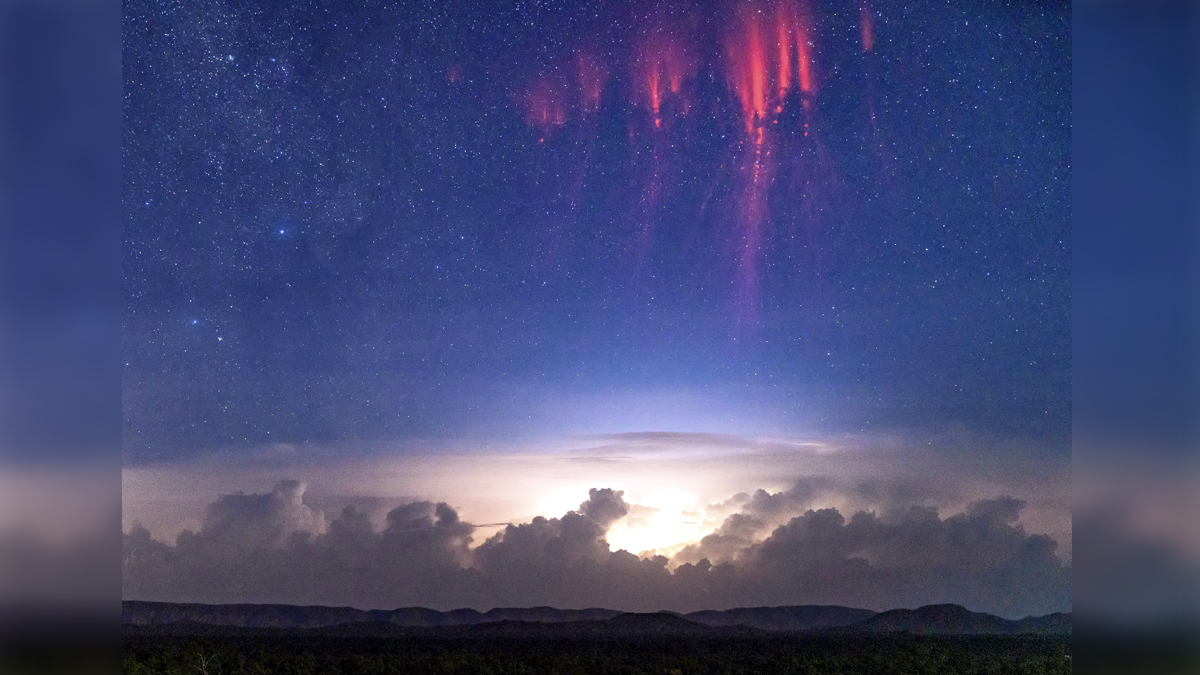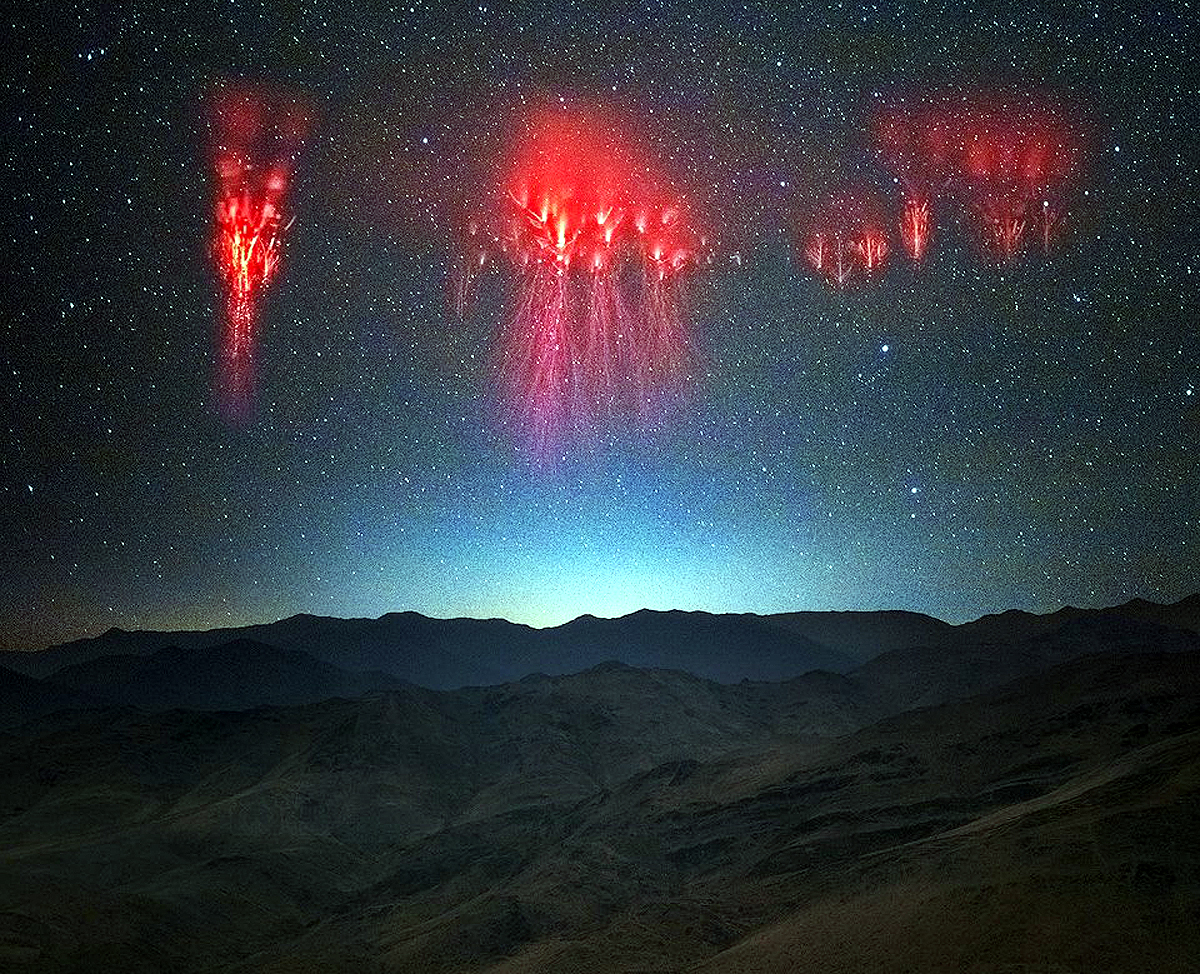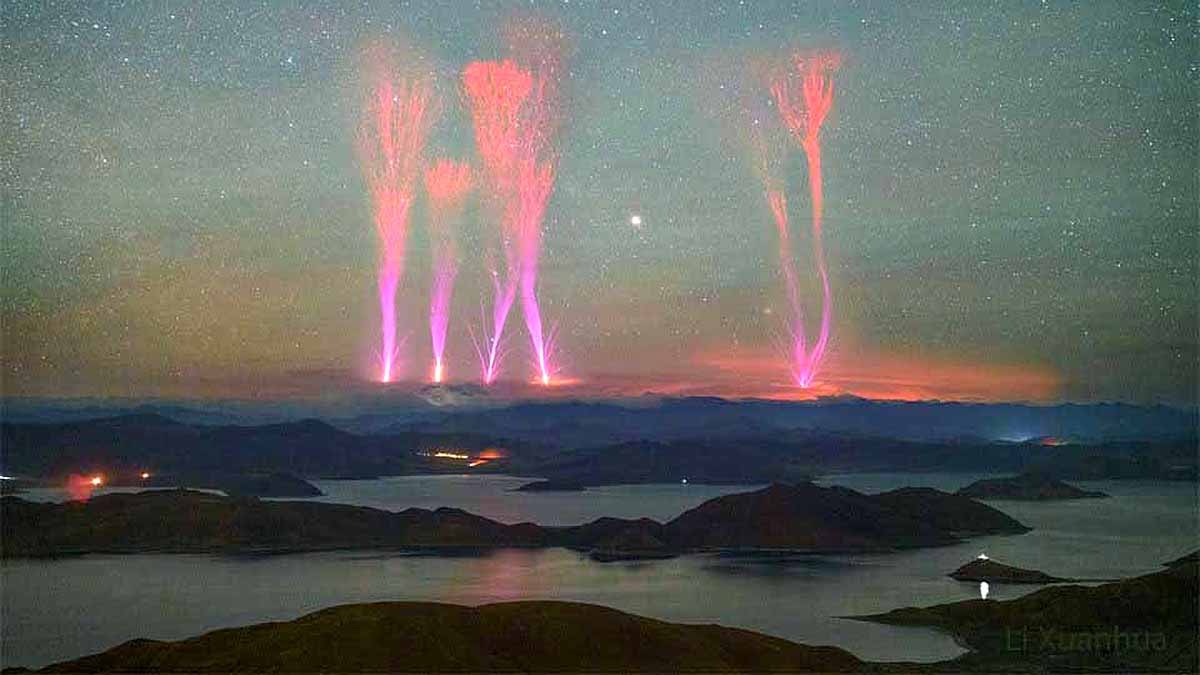This is no ordinary lightning. It comes in shades of red, blue, sometimes even purple and pink, and yes, orange is seen too. It's a rare sight, ascending not down but upward towards the Ionosphere, nearly 80 kilometers above the clouds.
It appears as if an invisible painter is brushing vibrant hues across the cosmic canvas, or perhaps sweeping the edges of space. Scientists at NASA have captured this extraordinary event, lightening that crackles not on Earth but in the atmosphere above it. Did you know this rare upward lightening is over 50 times more powerful than its earthly counterpart?

Source: aajtak
These elusive flashes of brilliance graces the skies approximately 1000 times a year worldwide. The image here shows four such strikes. Relatively unknown to the scientific community, these were discovered merely two decades ago and are referred to as 'Sprites.' They arise from highly sensitive and intense thunderstorms.
Fleeting yet Fascinating: The Rare Aerial Spectacle
While typical lightning descends from clouds to ground, Sprites race towards space, reaching the uppermost layers of the atmosphere. Their strength and speed are phenomenal. These red flashes, Sprites, are visible only for milliseconds, making their observation and study an arduous task. However, we'll share with you what scientists have managed to deduce thus far.

Source: aajtak
Sprites Explained
Named for their elusive behavior, Sprites are energy particles that stem from electrical currents generated by severe thunderstorms which reach upward to the Ionosphere – some 80 kilometers above ground level. Usually shaped like jellyfish or carrots, they can expand across 48 kilometers in width, though intensity may vary this dimension. They are hardly visible from the ground but can be clearly seen from planes at high altitudes or even from space stations.
Sprites are not exclusive to thunderstorms; they're part of Transient Luminous Events (TLEs), also known as Blue Jets. These are cones of blue light shooting downward from the stratosphere forming disc-like shapes aloft.
Spaceborne Sprites Unraveled
It's not just our atmosphere that can produce lightning-like Sprites. These bursts of energy are likely to happen around any planet or star with an atmosphere. In fact, Sprites were initially photographed by NASA's Voyager-1 spacecraft in Jupiter's atmosphere in 1979, identified as Blue Jets.
The First Glimpse of Space Sprites
First spotted by airline pilots in the 1950s, theories about Sprites abound. The first photographic evidence emerged accidentally in 1989 when researchers at the University of Minnesota were testing a low-light camera and unintentionally captured the glow above the clouds. Subsequently, astronauts from the space station have recorded many videos of these intriguing lights.




